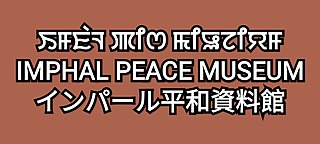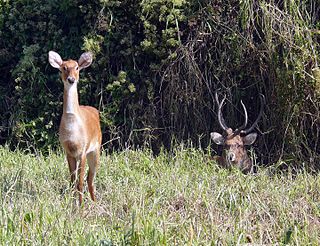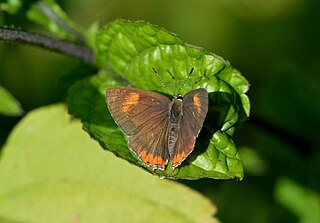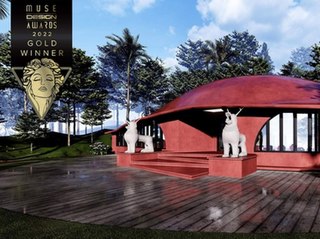
Manipur is a state in northeast India, with the city of Imphal as its capital. It is bounded by the Indian states of Nagaland to the north, Mizoram to the south and Assam to the west. It also borders two regions of Myanmar, Sagaing Region to the east and Chin State to the south. The state covers an area of 22,327 km2 (8,621 sq mi). The official and most widely spoken language is the Meitei language. Native to the Meitei people, it is also used as a lingua franca by smaller communities, who speak a variety of other Tibeto-Burman languages. Manipur has been at the crossroads of Asian economic and cultural exchange for more than 2,500 years. This exchange connects the Indian subcontinent and Central Asia to Southeast Asia, East Asia, Siberia, regions in the Arctic, Micronesia and Polynesia enabling migration of people, cultures and religions.

Moirang is a town in the Indian state of Manipur, best known for the tentatively listed UNESCO World Heritage Sites of the Keibul Lamjao Conservation Area (KLCA), covering Keibul Lamjao National Park (KLNP), the world's only floating national park, the buffer of Loktak Lake and Pumlen Pat. It is best known for the being the place of origin of the ancient epic legend of Khamba and Thoibi, one of the seven epic cycles of incarnations of Meitei mythology and folklore. Nationwide, it is also famous for the INA War Museum in the INA Martyrs' Memorial Complex, where Colonel Shaukat Malik of the Indian National Army hoisted the Tricolour for the first time on Indian soil on 14 April 1944. It is situated approximately 45 km (28 mi) south of the state capital Imphal. It has an area of 269 km2 (104 sq mi) with a population of 62,187 in 67 villages. There are 12 Panchayats in this block.
Kakching is a town in the southeastern part of the Indian state of Manipur. It serves as the headquarters of Kakching district and is a major commercial hub in the state. In 2018, Kakching was declared as the cleanest city in North East India by the Swachh Bharat Mission of the Indian government.

Kotla Nihang Khan is a suburb town of Ropar city in Punjab, India. It is famed as the erstwhile principality of the seventeenth-century Pathan zamindar ruler, Nihang Khan, who was an associate of the tenth Sikh Guru, Guru Gobind Singh.

Pakhangba is a primordial deity, often represented in the form of a dragon, in Meitei mythology and Sanamahism, the indigenous religion of Manipur. He is depicted in the heraldry of Manipur kingdom, which originated in paphal, mythical illustrations of the deity. It is believed that the ancestor of one of the Meitei clans manifested himself as the Pakhangba.
The Sacred Jackfruit Tree is a historical site in the Indian state of Manipur where a jackfruit tree growing on the small hill of Kaina was used to carve images of Hindu god Krishna. Rajarshi Bhagya Chandra, earlier known as Shree Jai Singh Maharaja, the King of Manipur in the 18th century, had a dream in which he received instructions from Krishna to carve His images from this tree. Accordingly, seven images of Krishna were carved from the jackfruit tree and installed in various temples in Manipur and in the neighboring state of Assam. One such temple is the Shree Govindajee Temple at Imphal.

Nongshaba is a lion god in Sanamahism and Meitei mythology. He is also regarded as a king of the gods. He is credited with producing light in the primordial universe and is regarded as the maker of the sun. He is worshipped by the people of both the Ningthouja clans as well as the Moirang clans. Nongshaba was worshipped by the people of Moirang clan as a lineage deity and regarded as the father of the god Thangching. He is the greatest of the Umang Lais but he made his only son Thangching the chief deity of Moirang.

Meitei inscriptions are Meitei language inscriptions cut into stone slabs. They are a major source of information about the ancient history of the Meitei people and the kingdom of Kangleipak. They are mainly found in the hills as well as the plains of present-day Manipur. They were written using either the Meitei script or the Bengali script.

The Imphal Peace Museum (IPM) (Meitei: Imphal Aying-Achik Pukei Lankei Shanglen, Japanese: インパール平和資料館, romanized: Inpāru heiwa shiryōkan) is a World War II museum at the foothills of the Red Hills (Maibam Lotpa Ching) in Manipur, India. It is a living memory of the Battle of Imphal (Anglo-Japanese war) and other World War II battles (March–July 1944) fought in Manipur. It is supported by the non profit grant making Nippon Foundation (TNF), collaborating with the 2nd World War Imphal Campaign Foundation, Manipur Tourism Forum and the Government of Manipur. Notably, in a poll conducted by the British National Army Museum, the Battle of Imphal and Kohima was bestowed as Britain's Greatest Battle.

The Manipur State Museum is an institution displaying a collection of artistic, cultural, historical and scientific artefacts and relics in Imphal, Manipur, India. It has galleries housing materials of natural history, ethnology and archeology.

Manipur Zoological Garden is a zoo in Iroisemba, Manipur. It is the second habitat of Sangai, the world's only dancing deer species, after the Keibul Lamjao National Park, the world's only floating national park. It is a medium sized zoological garden. It houses Schedule 1 species of amphibians, birds, mammals and reptiles. The animals kept in the zoo are mostly endemic to Manipur. The Central Zoo Authority of India recognized it as the coordinating zoo for the conservation breeding center of Sangai and Serow.

The Khonghampat Orchidarium is a botanical garden in Imphal, Manipur, India. It is dedicated to the collection, cultivation, preservation and display of a wide range of 500 varieties of orchids found in Manipur. It houses some of the rarest orchids in the world. The peak blooming season of the orchid flowers is from April to July. The finest visiting season is March to April. This Orchidarium is the orchid centre of the Forest Department of Manipur.

The Loktak Folklore Museum or the Thanga Folklore Museum is a folk museum in Thanga Island in the Loktak lake of Manipur, India. It cares for and displays a collection of artistic, cultural and historical artefacts associated with the Loktak lake. The museum preserves the folk customs and beliefs, folk medicines, folk literature associated with the Loktak lake.

Yangoupokpi-Lokchao Wildlife Sanctuary is an Indo-Burma wildlife sanctuary in Chandel district of Manipur. It is in the Indo-Myanmar border about 110 km from Imphal. It has an area of 184.80 square kilometers.

The INA War Museum or the Indian National Army War Museum is a WWII museum in Moirang, Manipur. It is the only official WWII museum in Manipur though many other WWII museums are opened in the state. This museum is situated inside the INA Memorial Complex. The museum focuses primarily on the rise of the Indian National Army (INA) and the contributions of Subhash Chandra Bose to the Indian independence movement. This museum is the only official museum dedicated to Netaji Subhash Chandra Bose.

Pureiromba is a God in Meitei mythology and religion. He is the giver of rain and agricultural prosperity. He is one of the major Umang Lai deities. He is the Ancestor God of the Angom clan of the Meitei ethnicity.

Panam Ningthou is a God in Sanamahism, the indigenous religion of Manipur. He is the protector of crops, especially rice, from hailstorms and thunder. According to legends, He ignited the first fire with flint. He is one of the Umang Lai deities.

The Mount Manipur Memorial is a memorial site in the Mount Manipur of the Andaman and Nicobar Islands, India. Spanning over an area of more than 45000 sq ft, the memorial site is dedicated to the Manipuri freedom fighters and the martyrs of the Anglo-Manipur war. In the year 2022, the memorial site won the "International Muse Design Award 2022", through the designs of the "Huidrom Design Studios" from Manipur.

There are three notable museums inside the Kangla Fort in Imphal West district of Kangleipak, which are the Kangla Museum, the Archaeological Museum and the Memento Museum. Some people also count the Hijagang as a museum.

The Sanggāi Yumpham, was the citadel, a fortified royal residence within the Kangla Fort, Imphal. It is preserved as an archaeological site as well as a tourist attraction.


















